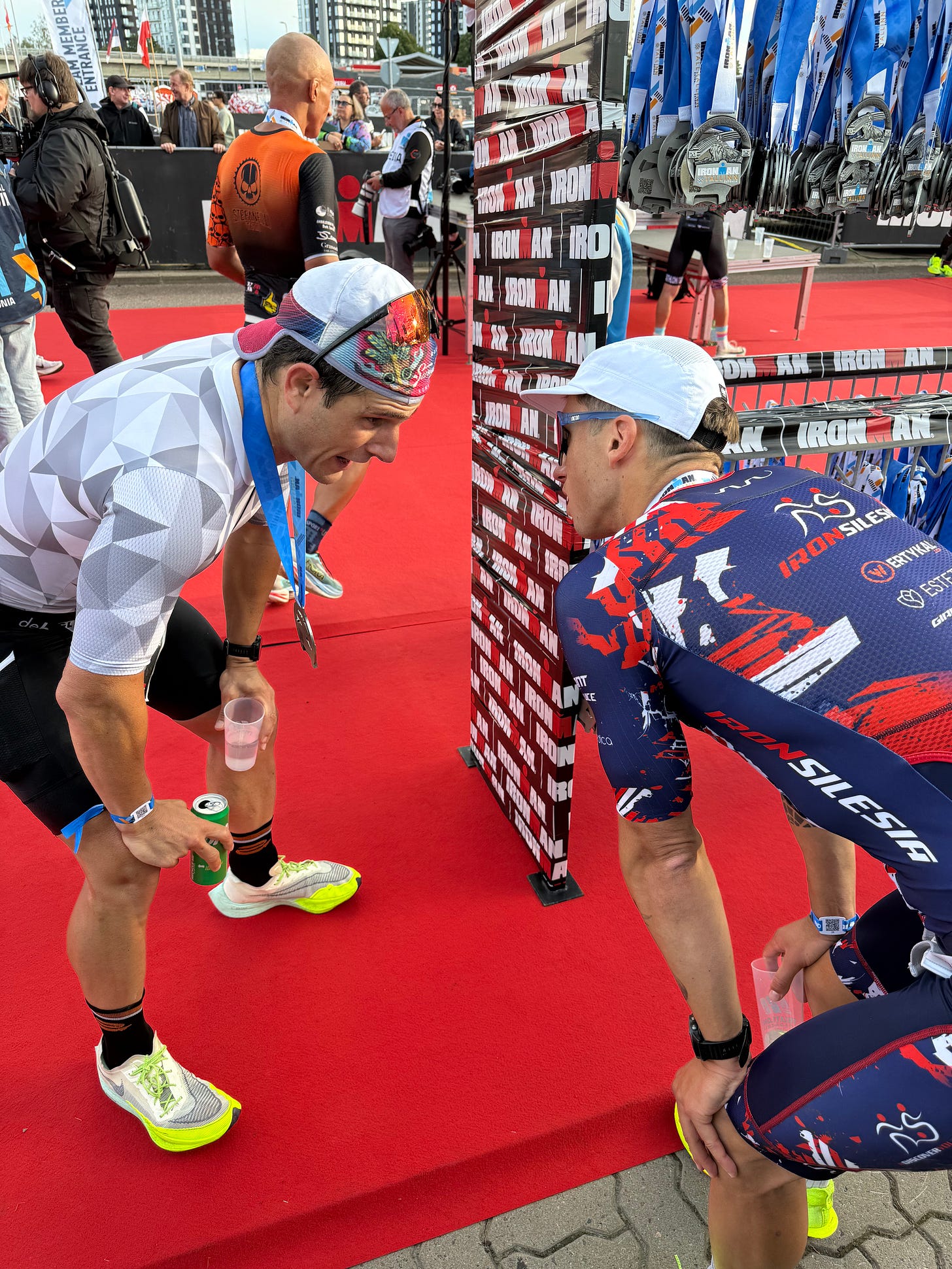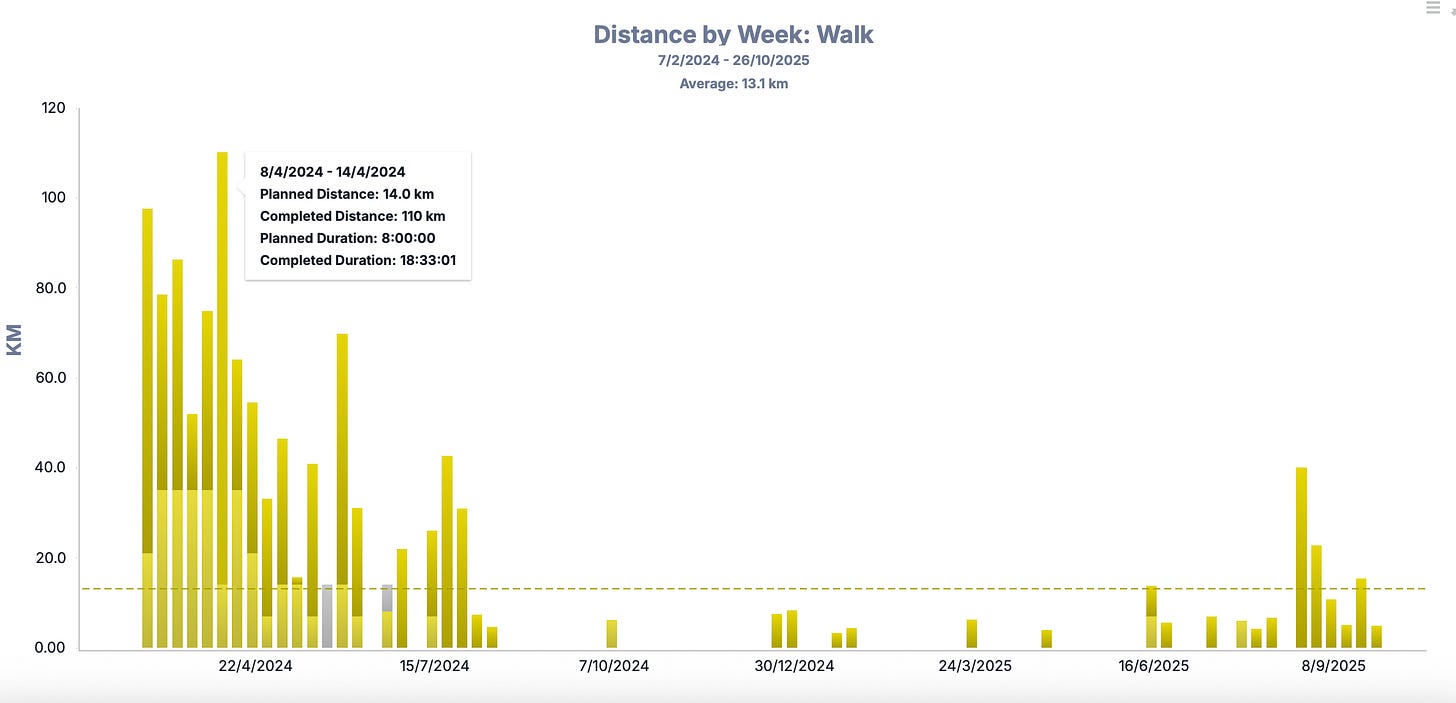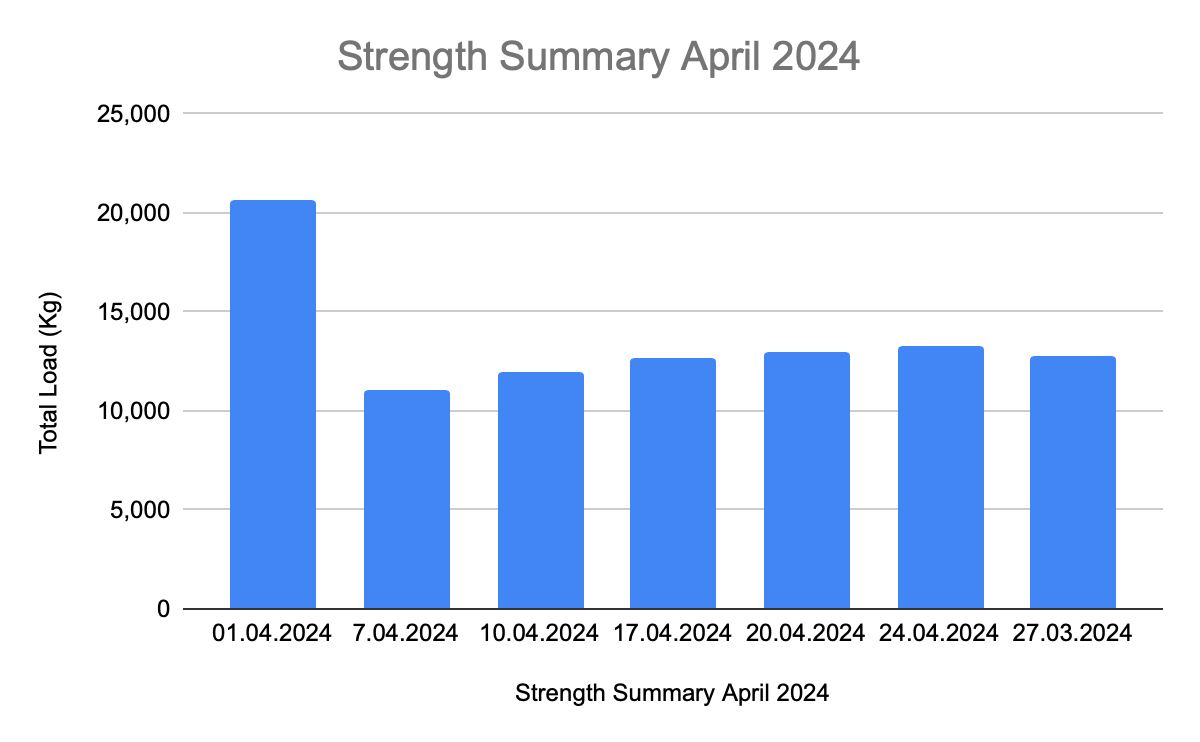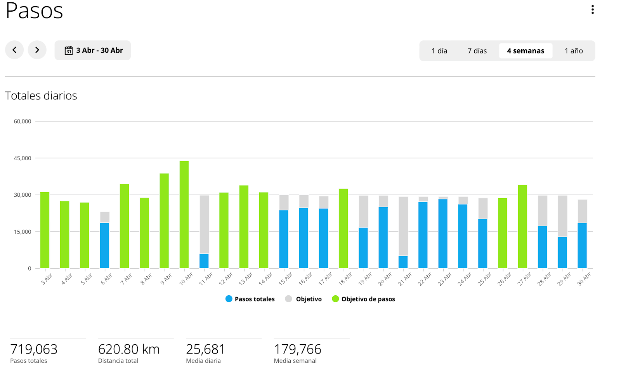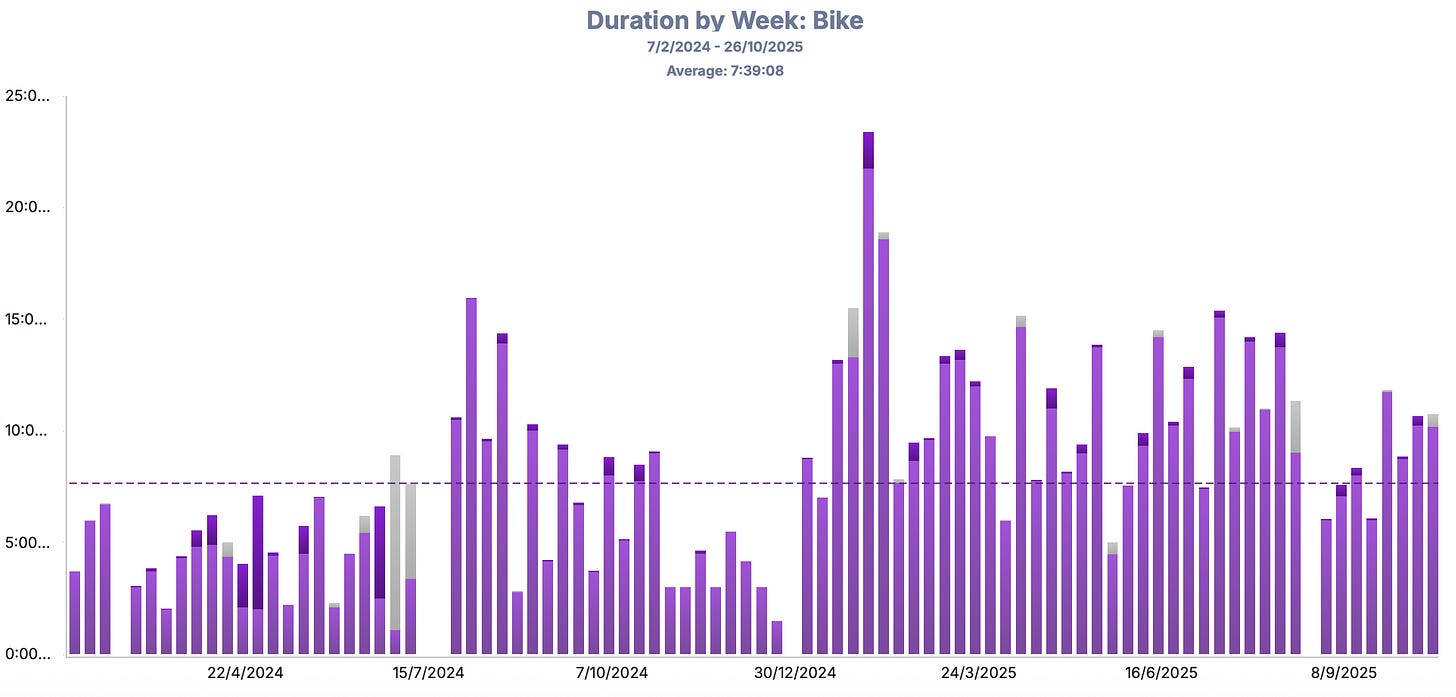635 Days Back: Rebuilding from Basic Fitness to Ironman Performance
“Peak performance measures results. Mastery measures growth.” - Iñaki de la Parra
These last 635 days have been about more than getting back in shape.
It’s been a process of learning, unlearning, and rebuilding from the ground up, not necessarily chasing numbers, just observing what truly works and what doesn’t, while generating principles that could also apply to others. I have discussed this and a bit of why I am back in my recent conversation with
in his podcast The Next MoveOver the next decade, my goal is to keep sharing those findings, to re-learn what I thought I knew, to test new ideas and to pass along what actually I think could move you forward or help others around me.
I want to give you, the reader, concepts and blueprints you can use to make your own journey more efficient, to minimize wasted energy and keep your path authentically yours.
I have lived for outcomes, my focus now is mastery.
The first gave me results: measurable, short-lived.
The second is giving me perspective, a way to keep growing without losing myself in the process while helping others.
Learning in public, reflecting and sharing honestly so that maybe you can take what fits and skip a few detours I once took (or maybe I am still taking…)
When I decided to come back to endurances sports particualrly triathlon, I didn’t want a “comeback season.” I wanted a framework I could sustain and share.
Today marks day 635, the midpoint of what I call my first Olympic cycle. In this article, I share the data, structure and lessons from this journey. How I went from walking to a 4h10 70.3 and a 9h10 Ironman in less than 700 days, and what that process has taught me about physiology, compounding and mastery. As well as the aging athlete.
When I started knew it would take time. I was coming from very basic fitness level. But when I commit to anything, I stand by my word.
What I’d done earlier in my elite career would help, but not as a blueprint to repeat.
Trying to copy what worked in the past would make no sense, I’m at a different stage now, with new priorities, responsibilities and ambitions (and age).
I was coming back from a long stretch of maintenance fitness. I could do basic lifts, walk and stay active, but I wasn’t a competitive endurance athlete anymore, not the kind who can swim, bike and run for 20 hours a week, week after week and be able to compete in a race. At least not when I started this first 1,500-day cycle on February 7, 2024.
My super secret: I started small.
Morning walks. Lots of them. Then rucking with a backpack and slowly adding weight. Then strength work to rebuild the base. Step by step, I rebuilt consistency and the discipline that endurance training had always brought to my life.
I mapped out two 1,500-day plans, about 8 years total, what I call a double Olympic cycle. The idea is to go from maintenance fitness back to a truly competitive triathlon level, but in a sustainable way. Not chasing outcomes. Just process, compounding and patience while sharing my introspections and findings.
I’m halfway through the first cycle, which ends on March 9, 2028, but my real focus is the second 1,500-day block. By then, I’ll be 49 years old, just a few days after my 49th birthday in April, 12th. That will mark the end of 3,000 days of continuous development, my personal double Olympic cycle, before I enter the second half of my life.
I’ve learned since my mid-20s to think in decades. It’s worked well, especially when I’ve allowed things to compound over time: money, fitness, relationships, and learning. Every time I’ve interrupted that compounding, I’ve lost ground.
My goal isn’t to “win anything specific”.
I’ve learned that winning rarely looks the way you imagine.
This time it’s 100% about the process, the people, the community, the long term commitment to my north start, the repetition, the curiosity, and the small daily wins that compound over years while having a positive impact in others.
Time filters what matters and exposes what doesn’t. If I can keep improving, learning, and enjoying the process, I win every day of my life.
The goal is simple: to be in the best shape of my life by the halfway point of it. If I plan to live 100 years, then April 17, 2032 is my marker: 50% of life, 100% of effort.
2. From Fitness to Foundation
When you come back after years away from racing, you don’t start at zero. You start at the level of maintenance fitness, strong enough to survive training, but not to adapt from it.
The first 180 days of this journey were about rebuilding, not performance. My sessions alternated between walking, lifting, mobility and rucking. A deliberate choice to strengthen connective tissue and re-acclimate the cardiovascular system without mechanical stress.
My heart rate rarely exceeded Zone 1. I spent nearly 80% of this period close to Zone 0. The goal was not to accumulate fatigue but to stimulate adaptation through consistency.
“You can’t rush mitochondrial development. The body rewards patience with durability.”
The first graph (see below) shows the weekly upward trend.
The goal was consistency and discovering what level of weekly volume I could sustainably handle: both now and in the near future. This applied not only to training but also to life and other commitments.
I soon realized that when you stay organized, put in the work, and allow proper recovery, it actually gives you back energy (and even time) that you can reinvesteither in training or other areas of life.
You’ll notice that during the first 4 weeks, I kept things very conservative, especially compared to what came later.
Early on, I realized that tracking everything: every walk, commute, strength and mobility session, kept me engaged. It made me feel like I was moving forward, even on light days. I kept uploading all types of movement into TrainingPeaks.
Also notice there were no zeros in the build of the past 635 days. At first, it was just a way to trick myself into consistency, but it worked.
I began to see that Zone 0, simple movement, was adding real value: building consistency, capacity and momentum. It was all compounding toward what I needed and wanted: to rebuild from the ground up.
I didn’t count kilometers. I counted days. No zeros was the initial key!
In these early months, consistency is capacity.
It worked.
You could even argue that in the first months of 2024, I was logging more “training hours” than during my peak Ironman shape in August 2025. But the truth is simple: it worked for me. And to be fair, I really did walk a lot (see below).
I realized early on that I could walk a ton and build a system around it. Looking back, that approach probably helped me get back in shape faster than I expected. Again because it pushed me to create a daily, weekly and monthly system to do it.
Later, I kept the daily walks but only recorded them when they had a clear purpose: a loaded walk, a ruck or a recovery session. Even without counting the unlogged ones, my walking volume stayed high. That is why you see almost no walking after mid 2024.
I went from an average of 16,658 steps per day in 2024 to 13,221 in 2025 (through October). Not bad considering how much swim, bike, and run volume I added this year (2025).
So next time you think walking is just that: walking, pause for a moment and consider what it can actually do for you. Just take the first step.
3. The Transition: From Capacity to Durability
I began rucking and walk-jogging, lifting and bike for capacity at super low intensity, most below 160W. That was Feb 2024 until October 2025. I reintroduced the pool: short swims focused on breathing control and feel for the water and 25 around July 2024. Strength sessions transitioned from heavy lifting and military style workouts to more triathlon-specific conditioning: posterior chain, hip stability and single-leg strength towards the end of 2024. But I did 2023 a lot of this heavy strength training that followed into the first semester of 2024.
An example of my loading in the gym by the month of April 2024
Same month of April 2024 my load in the other sports:
And April 2024 walk load:
A typical training week in April 2024:
You can see a clear pattern early in my training, I was focused on moving a lot.
All that Zone 0 movement added up and forced me to find time for it every day. That process helped me understand what my real weekly and monthly training volume could look like, the kind I could sustain year-round while building first capacity and then durability towards 2025.
The walk started as the metabolic backbone, that later progress to the bike later in the build.
I never stopped riding, even in the quiet years. It just has changed how much I really do of it.
Probably in the iteration of what will come there will be more bike volume included.
Time distribution by discipline
This is the essence of a capacity-building phase: aerobic dominance with neuromuscular support. The key was never pushing too far beyond my recovery bandwidth.
I introduced basic zone calibration tests or sub-max testing early in 2024 this looked like:
Keep reading with a 7-day free trial
Subscribe to Iñaki’s de la Parra Substack to keep reading this post and get 7 days of free access to the full post archives.


